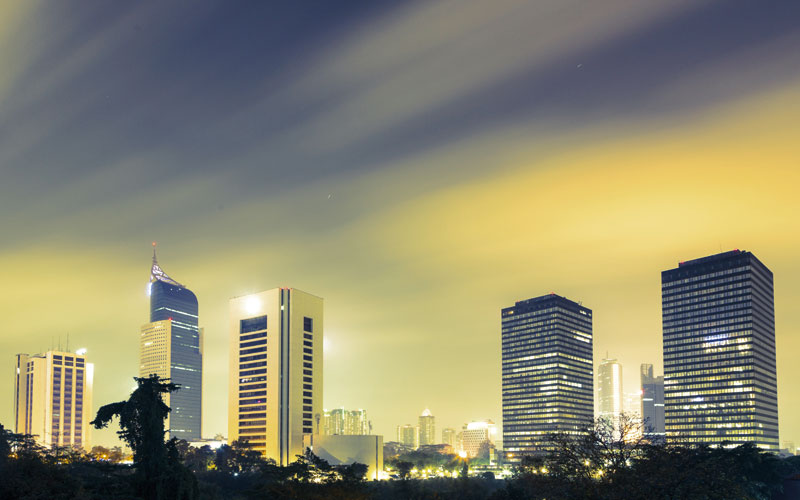Consistent growth of 5 to 6% per year and a strong financial system generate strong economic expansion in Indonesia, the world’s 16th largest economy

Commodities have long been the backbone of Indonesia’s economy, accounting for more than 50% of exports from the 16th largest economy in the world. But, warns the World Bank, “Indonesia’s commodity exports are facing significant headwinds”, the strongest being falling global commodities prices.
There is a silver lining, though. Lower commodity prices should help to make Indonesian manufacturing more attractive, the World Bank says.
And there’s room for manufacturing to grow. The sector currently contributes just 24% of Indonesia’s GDP, and, as of 2011, employed 14.4 million Indonesians, around 6% of the population of 248 million. International manufacturing giants, including General Electric, Korea’s LG and Samsung, and Japan’s Toyota, are already knocking on the archipelago nation’s door, drawn by low wages, abundant resources, and a banking and political system that have remained stable, even as political and economic ructions have rocked other nations in the region.
Up to now, growth in the manufacturing sector has been fuelled largely by domestic demand for goods. Indonesia is the fourth most populous country in the world, after China, India and the United States, and has a growing middle class. In fact, global information and measurement company Nielsen expects Indonesia’s middle class to double by 2020, and says it’s time for the rest of the world to pay attention to Indonesian shoppers.
Mirza Adityaswara, the Senior Deputy Governor at the Bank of Indonesia, says that to realize the full potential of the manufacturing sector, Indonesia should look beyond the domestic market, increase exports of manufactured goods, and “diversify our export destinations”.
“The U.S. is steadily recovering, so it is time to refocus on the United States as an export destination,” he adds.
Meanwhile, Muliaman D. Hadad, Chairman of Indonesia’s Financial Services Authority (OJK), says the middle class will have a key role to play in growing the economy, beyond purchasing made-in-Indonesia goods.
“Imagine around 135 million Indonesians joining the middle class… the impact on the economy will be significant,” he explains.
As more Indonesians move into the middle class, more of them will be paying more tax, which will also help to boost the economy – but only if the government does a better job collecting those taxes, officials say.
Only around 0.33% of Indonesia’s 1,000 trillion rupiah in tax revenues comes from personal tax, Deputy Finance Minister Bambang Brodjonegoro says. The overwhelming portion is from corporate and value added tax.
“We need to tackle this disparity, especially as Indonesia has been growing from a low-income country into a low-middle income country,” he adds.
There are other issues to be addressed to drive Indonesia’s economy forward, the most sensitive of which are fuel subsidies.
Some say the subsidies put a $20 billion a year hole in the nation’s economy, and Indonesia-watchers are warning that if nothing is done about the subsidies soon, the current account deficit could climb above 3% by year’s end.
Yet removing the subsidies is unpopular with the public because it will bump up gas prices and increase inflationary pressure. Hardest hit would be the large portion of Indonesians who live just above the poverty line. Nonetheless, president-elect Joko Widodo is reportedly mulling a 14% hike in the price of a liter of gasoline before the year is out. To soften the blow on the poor, he would also widen the country’s social safety net, improving access to healthcare, transportation and education for the poor.
0 COMMENTS